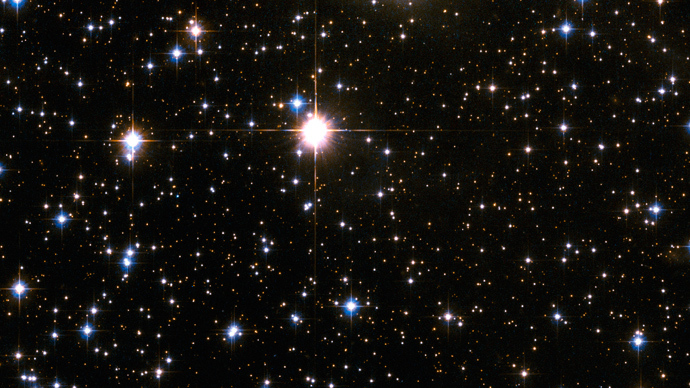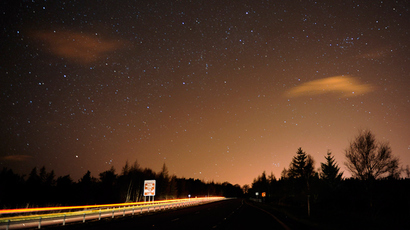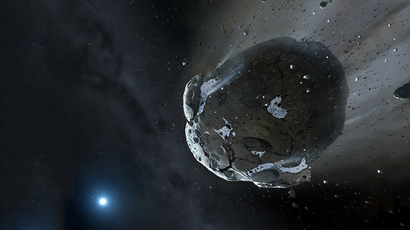‘Goldilocks’ Galaxy: Scientists estimate 8.8 billion planets ‘just right’ for life

Spinning in the vast, spiraling Milky Way are billions of planets similar in size and temperature to Earth in what astronomers have dubbed the ‘Goldilocks Zone’ – not too hot, not too cold, but just the right size for life to evolve.
The calculation, based off of a tiny sample of our galaxy, was published Monday in the journal “Proceedings of the National Academy of Science.”
A team of astronomers from the University of California, Berkeley and the University of Hawaii at Manoa, Honolulu, used the Kepler space telescope – launched by NASA in 2009 to seek out Earth-like planets orbiting other stars – to peer into a mere drop in the Milky Way.
In this case, that drop in the galactic bucket contained 42,000
Sun-like stars. The astronomers were looking for a dimming caused
by an orbiting planet as it crosses between earth and its parent
star. By observing the frequency of this dimming, scientists were
able to determine the body’s orbital period, which tells them
both its distance from the star and how much light was blocked –
providing an estimate of the planet’s size.
"We found 603 planets, 10 of which are Earth size and orbit in the habitable zone, where conditions permit surface liquid water," the astronomers wrote."We find that 22 percent of Sun-like stars harbor Earth-size planets orbiting in their habitable zones. The nearest such planet may be within 12 light-years (70 trillion miles)."
With an estimated 200 billion stars in our galaxy, the scientists have extrapolated that 40 billion of them are similar to our sun. With roughly one-fifth of those with Earth-size planets in the habitable temperature zone, it means "just in our Milky Way galaxy alone, that's 8.8 billion throws of the biological dice," study co-author Geoff Marcy, from the University of California at Berkeley, told AP.
Scientists say the next step is to look with high-powered space telescopes for atmospheres on these planets that have yet to be launched to determine whether they in fact have the right conditions to sustain life.
The figure of 8.8 billion Earth-size planets, incidentally, is only a jumping-off point. The researchers were only looking at sun-like stars, which are not the most common. An earlier study concluded that up to approximately 15 percent of the more frequently occurring “Red Dwarf” stars have Earth-sized planets within the Goldilocks Zone. Red dwarfs range in mass from a low of 0.075 solar masses) to about 50 percent of the Sun – often incorrectly described as a yellow dwarf – and have a surface temperature of less than 4,000 Kelvin.
Marcy says if you add them all together, you’re looking at 40 billion stars potentially ripe for life.
And that's just our galaxy. The neighboring Andromeda Galaxy has an estimated 1 trillion stars. And there are yet more galaxies which by themselves are vastly larger than the 30 galaxies that comprise our local cluster of galaxies. IC 1101, a supergiant elliptical galaxy located some 1.07 billion light years away in the constellation of Virgo, is estimated to have a whopping 100 trillion stars. If you’re head isn’t spinning yet, a recent German supercomputer simulation using information collected from the Hubble Space Telescope estimates there might be as many as 500 billion galaxies in the Universe, many older than our own.
With the chances of 10 trillion Earth-like planets existing in
the observable universe, there is an astronomically high chance
that we are not alone.














